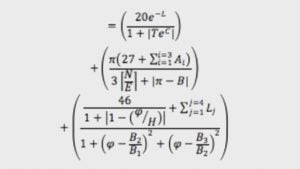Here’s how to build the perfect snowman according to algebra

It’s tough to make mathematics sexy, but algebra can give your snowman plenty of curb appeal while the ‘Beast from the East’ winter snowstorm is still piling it on the UK in March 2018.
Yes, a mathematician has developed a formula for building the perfect snowman.
That’s great news for Brits in a week where many areas of the UK have been met with flurries of January snowfall.
The formula comes courtesy of Dr James Hind, of Nottingham Trent University, who was commissioned to work out the ideal snowman proportions by insurance firm More Th>n.
The best proportions are as follows:
- Height – 64-inches (1.62 metres)
- Tiers – three
- Head diameter – 12-inches (30cm)
- Body diameter – 20-inches (50cm)
- Base diameter – 31-inches (80cm)
- Carrot nose – 1.5-inches (4cm)
- Distance between eyes – 2-inches (5cm)
- Accessories – hat, scarf, gloves
- Buttons – Three, equal distance apart
- Distinct limbs – four
Related: How to fix a frozen boiler
 The formula, which sort of looks like a snowman
The formula, which sort of looks like a snowman
Other tips include using sticks for arms and building with freshly fallen snow made at – or below – zero degrees Celcius.
The formula was commissioned in response to a survey that revealed 92% of Britons love building snowmen, but 87% don’t think they have the requisite skills to build a great one.
But how do our favourite snowmen rank when set against the formula? Bearing in mind that a perfect ratio score is 100/100, these were the results:
- Jack Frost (Jack Frost, 1998) – 80/100
- The Snowman (The Snowman, 1978) – 73/100
- Frost the Snowman (Frost the Snowman, 1969) – 49/100
- Leon (Elf, 2003) – 20/100
- Olaf (Frozen, 2013) – 15/100
Which snowman do you think is the most attractive? And do you think we need more snow-women? Tweet us @TrustedReviews.


